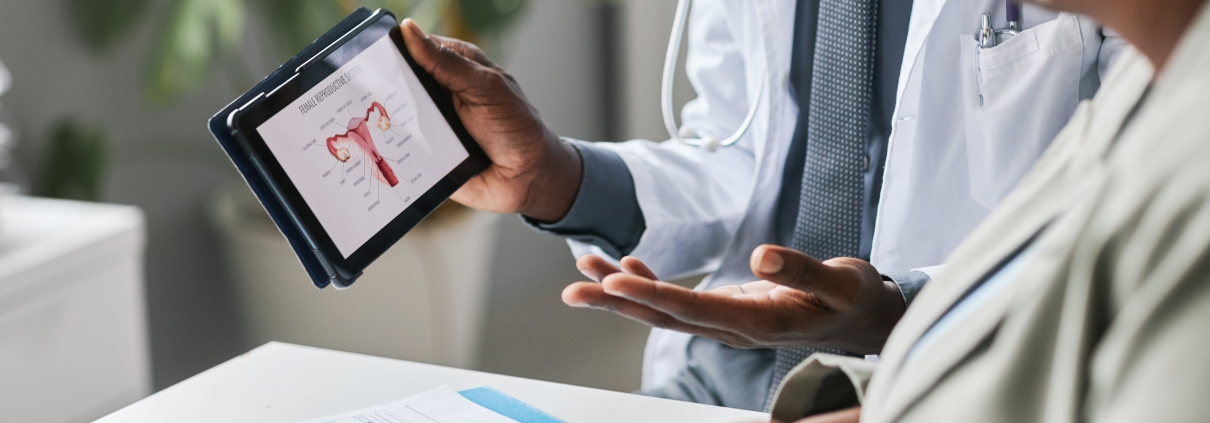How Successful Is Uterine Fibroid Embolisation?
When it comes to non-surgical options for treating fibroids, one of the first things many women want to know is the Uterine Fibroid Embolisation (UFE) success rate. This procedure offers relief from symptoms like heavy periods and pelvic pressure by blocking blood flow to the fibroids, causing them to shrink. It’s a safe option for many, with studies showing a success range between 81% and 96% for symptom relief. The procedure also avoids the need for hospital stays in most cases, and UFE recovery typically takes less time than traditional surgery.
Understanding the Uterine Fibroid Embolisation Success Rate
What Factors Influence the Uterine Fibroid Embolisation Success Rate?
Several things can impact how effective this treatment is. The uterine fibroid embolisation procedure’s success rate tends to be higher in women who have smaller or fewer fibroids. Where the fibroids are located also matters. Younger women often see better results, and overall health plays a role too. Even in cases with larger fibroids, many report fewer symptoms after the procedure.
Why Women Are Asking About the Uterine Fibroid Embolisation Success Rate
More women, especially in South Africa, are turning to this treatment for meaningful, long-lasting symptom control without having to undergo surgery. Keeping the uterus intact is another big reason for its growing popularity. While it may not be the right choice for those planning to get pregnant soon, it’s a strong option for those looking to avoid surgery and find relief from fibroid symptoms.
Long-Term Outlook and Uterine Fibroid Embolisation Success Rate
Not only does the uterine fibroid embolisation success rate look good in the short term, but many women continue to feel relief even years later. Up to 89% report they still benefit from the effects after five years. However, about 13% to 20% may need some form of follow-up treatment. That’s why choosing the right treatment starts with understanding your body and working with a doctor who can guide you based on your situation.
Uterine Fibroid Embolisation Success Rate: What the Numbers Say
Looking at treatment options for fibroids can be overwhelming, but the uterine fibroid embolisation success rate speaks volumes. Reports show a high rate of symptom relief, often between 81% and 96%, depending on the type and severity of symptoms. For many people dealing with heavy periods, over 91% experience improvement after UFE. That makes it a leading choice for those looking to manage fibroid symptoms without surgery.
High Uterine Fibroid Embolisation Success Rate for Pain and Pressure Relief
Beyond just reducing bleeding, the success rate remains strong in easing pain and pressure. Studies show that around 82% of women see a drop in pelvic pain and abdominal discomfort following the procedure. This isn’t a short-term fix either—up to 89.5% of women continue feeling better even five years later.
How UFE Affects Fibroid Size and Daily Comfort
One of the reasons the uterine fibroid embolisation success rate is so noteworthy is the impact it has on fibroid size. A major study reported an average 52.1% decrease in fibroid diameter one year after treatment. That kind of reduction can improve everything from how your clothes fit to how comfortable you feel during everyday activities.
Uterine Fibroid Embolisation Success Rate with Long-Term Outlook
While many benefit from long-term relief, it’s important to know that 12.7% to 20% of people may need a follow-up treatment eventually. This could be because symptoms return or weren’t fully resolved. Still, for the majority, the uterine fibroid embolisation success rate continues to support it as an effective and lasting option.
What to Know About the Uterine Fibroid Embolisation Success Rate
If you’re exploring treatment options for fibroids, knowing the uterine fibroid embolisation success rate can help you feel more confident about your decision. Uterine fibroid embolisation, or UFE, is a non-surgical procedure that’s been shown to relieve symptoms in most patients. Studies show a success rate ranging from 81% to 96%, with many women reporting less pain, lighter periods, and reduced fibroid size within months of the procedure.
One of the biggest advantages of UFE is that it doesn’t involve removing the uterus. That makes it appealing if you’re looking for a less invasive option with a shorter recovery time. Compared to traditional surgery like a hysterectomy or a myomectomy, the uterine fibroid embolisation success rate is especially strong for controlling heavy menstrual bleeding, which is one of the most common symptoms.
Comparing Uterine Fibroid Embolisation Success Rate With Surgery
When it comes to lasting relief, the uterine fibroid embolisation success rate holds up well. In fact, one study found that 91.8% of women experienced improvement in heavy bleeding. Myomectomy might be better if you have a lot of large fibroids, but it usually comes with longer downtime and a risk of fibroids returning. In contrast, UFE offers a lower risk of fibroids growing back and typically involves fewer complications.
It’s also worth noting that women who choose UFE are often satisfied with the long-term results. Between 73% and 89.5% still report symptom relief five years after the procedure, according to research. That’s an encouraging outlook if you’re looking for something that can make a lasting difference.
Uterine Fibroid Embolisation Success Rate and Fertility Considerations
If you’re hoping to get pregnant in the future, you should discuss UFE with your doctor. While the uterine fibroid embolisation success rate is high for managing symptoms, its effects on fertility are less predictable. Some women have had healthy pregnancies post-procedure, but it’s not commonly recommended for those trying to conceive.
UFE is just one of several treatments for fibroids. Other non-surgical options, like medications or focused ultrasound, are available too. Each comes with its own pros and cons, but the strong uterine fibroid embolisation success rate makes UFE a solid choice for many women looking for relief without surgery.
Conclusion
Considering uterine fibroid embolisation (UFE) can be a transformative decision in managing fibroid symptoms without the need for invasive surgery. With success rates between 81% and 96%, UFE provides a promising pathway towards symptom relief and improved quality of life. If you’re ready to explore how UFE can benefit you, consulting with a specialised radiologist is a crucial step. Speak to Minima Radiology, our experts are ready to guide you through your options and help you make the best choice for your health needs. Take control of your wellbeing and contact us today to learn more about how UFE can make a lasting difference for you.




Leave a Reply
Want to join the discussion?Feel free to contribute!